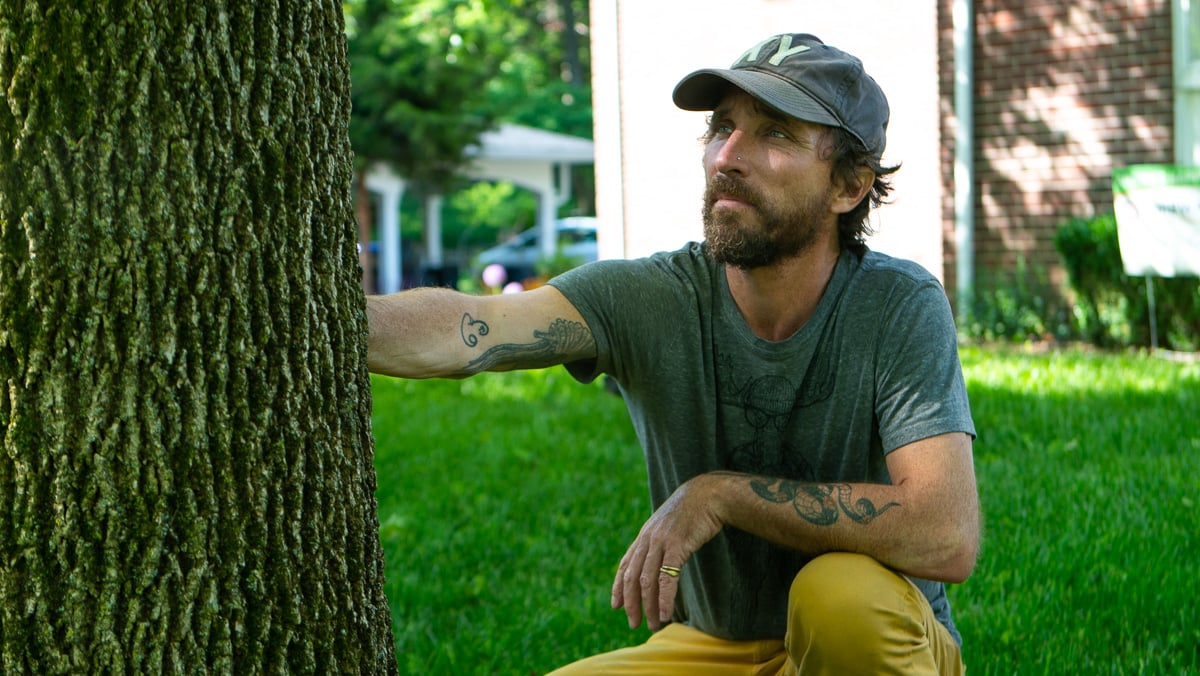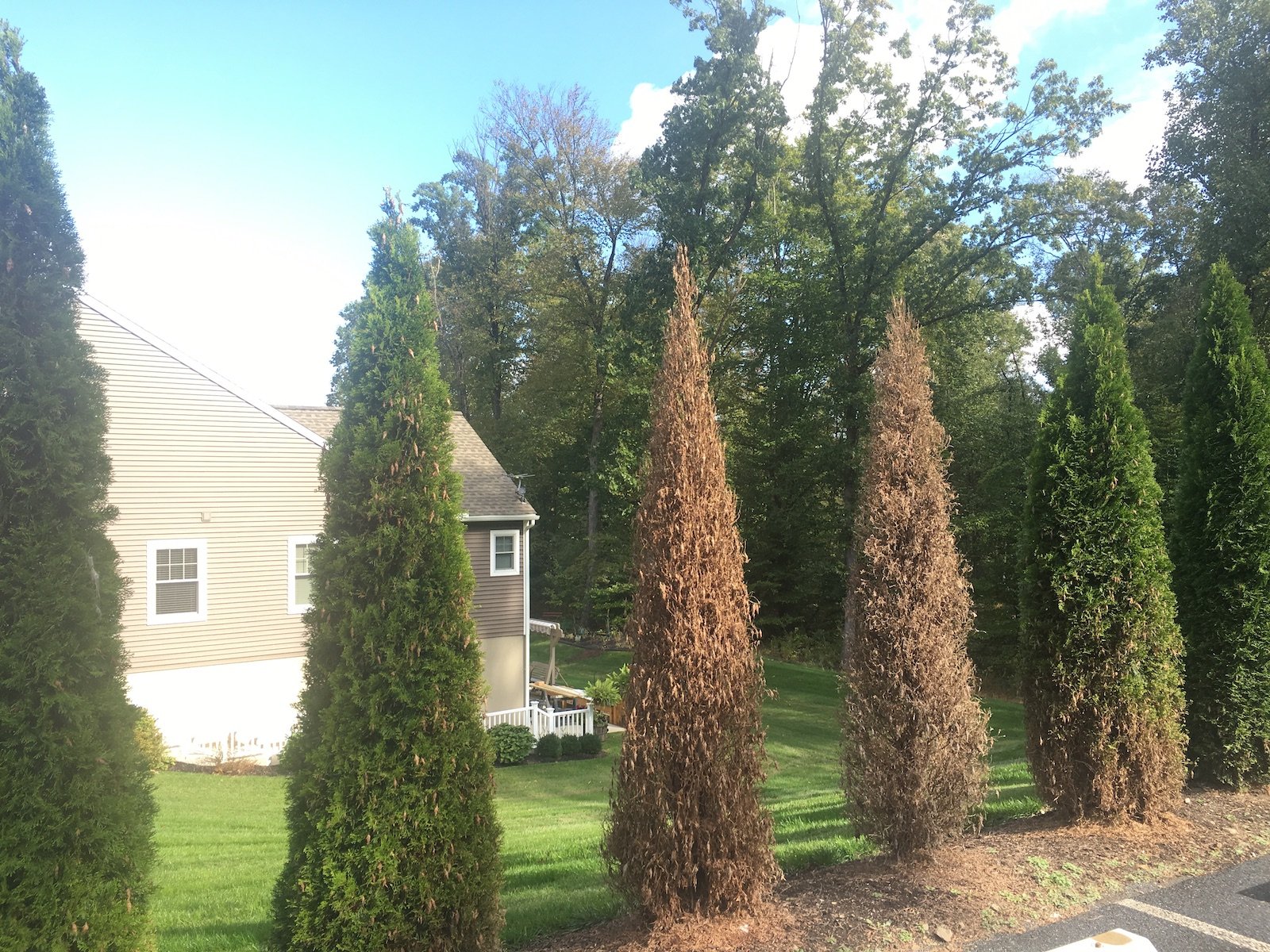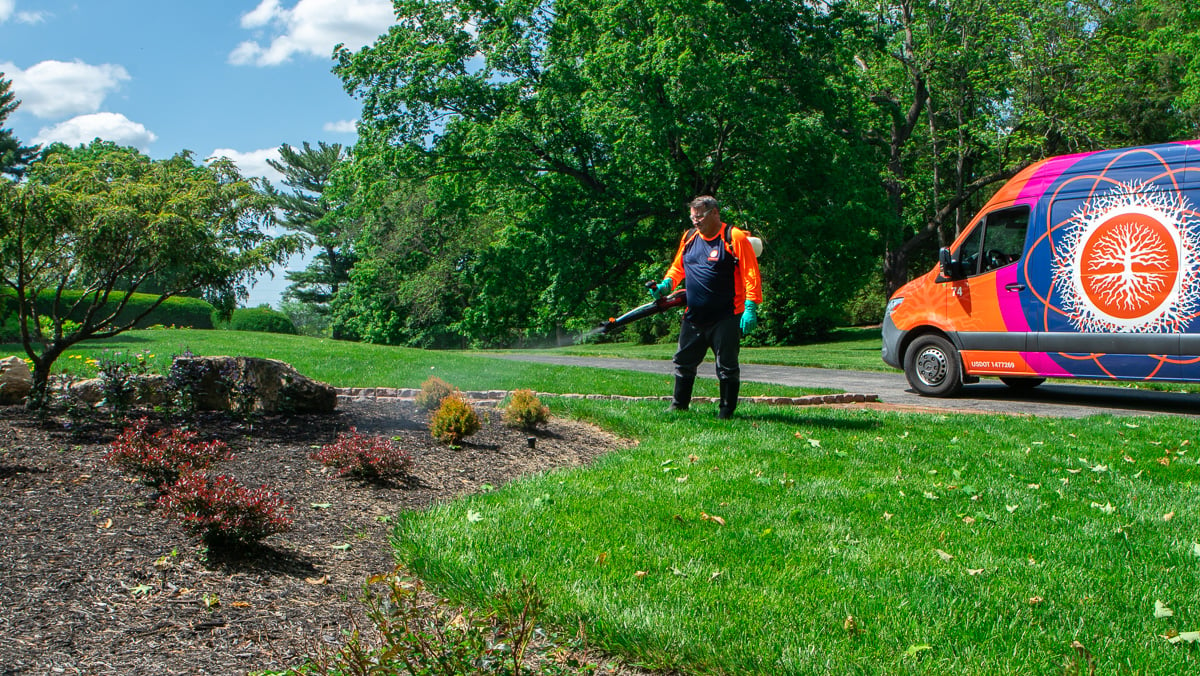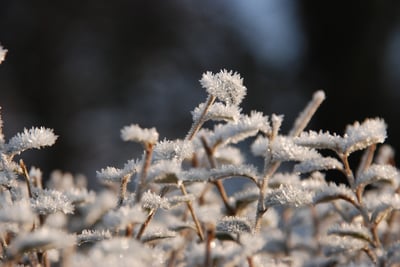


Here in Louisville, our hot and humid climate allows for the growth and spread of various plant diseases. In fact, there are more than 25 common plant diseases that we frequently see in homeowners’ landscapes.
Understanding some of the different types of plant diseases and what they can do to your landscape is important when it comes to addressing them properly.
We’ll cover everything you ought to know in this article so that you’re well-prepared to have a thriving landscape.
Table of Contents
List of plant diseases to have on your radar
What to expect with Kentucky plant diseases
What causes Kentucky plant diseases?
Treating common plant diseases
Preventing disease with Louisville plant care
As we mentioned, there are more than 25 different types of plant diseases that we commonly see here in Louisville. But let’s talk about some of the top diseases that we see most often.
#1: Anthracnose
#2: Root Rot
#3: Powdery Mildew
#4: Verticillium Wilt
#5: Fire Blight
#6: Thousand Cankers Disease
#7: Cedar Apple Rust
#8: Apple Scab
#9: Needle Cast

Let’s talk about some of these common plant diseases and what you can anticipate in terms of symptoms and impact to your landscape.

Anthracnose is a group of related fungal stem and leaf diseases that have been known to infect deciduous trees like Dogwood, Maple, Oak, Sycamore, Ash, and others.
Symptoms include small dead spots on leaves, browning areas along leaf veins, twig death, premature defoliation, and dying buds. In the early spring season, the latter can be misidentified as frost damage.
Anthracnose is generally more prevalent following a rainy spring or summer when the hot and wet conditions allow the fungi to thrive here in Louisville. It can spread quickly during hot and rainy seasons.
As the name implies, Root Rot is a general term for any disease with a pathogen that attacks the roots of trees. It’s usually a result of oversaturated soil. When water doesn’t drain well (due to compaction or just overall poor soil health and structure), then water will fill in empty space, and ultimately deprive the roots of oxygen.
The impact of root rot is initially seen at the soil level with symptoms like mushroom growth and/or tar-black vertical streaks on the lower trunk . The soil might also appear soggy and fail to drain around your plants.
Over time, the general health of your plants will decline. They might start by turning yellow. Eventually leaves may wilt and even fall off.
This fungal disease produces white or gray powdery growth that can affect the plant’s leaves, stems, and flowers. It is this powdery substance that is the telltale symptom. But you might also see leaf distortion and discoloration with this plant disease. Powdery Mildew can commonly lead to premature leaf drop.
Unfortunately, the spores from Powdery Mildew can spread to other plants in the landscape. This is a key reason why any plant material from diseased trees is removed carefully.
This fungal disease is common in deciduous trees. It is characterized in its early stages by heavy seed production, leaves that are smaller than normal, and browning of the margins of leaves.
Sometimes, only the foliage on one side of the tree will be wilted. This “one-sided symptom” is referred to as “flagging” and can be a telltale sign of this plant disease.
Trees that tend to be commonly affected by this disease include Maples and Ash trees. But it has also been known to affect Barberry, Elm, Linden, and others.
This Kentucky plant disease has been known to attack various species of plants in the rose family. It can also occur commonly on flowering pear trees. In fruit trees, the disease can kill blossoms, fruit, shoots, limbs, and even tree trunks. It is a serious bacterial disease that can pose major trouble.
When a tree is infected with Fire Blight, the blooms and the leaves can rapidly wilt and turn brown. This disease can also lead to the formation of cankers on limbs.
This plant disease is caused by the Walnut Twig Beetle which can carry a fungus when it tunnels beneath the bark of Walnut Trees.
Over time these repeated attacks and the resulting cankers (from the fungus) can lead to disruption of water and nutrients throughout the tree. Symptoms will start as yellowing and wilting leaves, which will eventually fall off.
This disease has been called a serious threat to the Black Walnut Tree, which is often considered a Kentucky favorite.
Another common plant disease is Cedar Apple Rust. This is a fungal disease that can occur on Apple and Crabapple Trees, which are common here in Kentucky. It can also impact Cedar and Juniper Trees. Symptoms show up as pale yellow spots on leaves which eventually turn orange in color.
When infections become severe, it can lead to significant leaf drop.
This fungus is known to attack both wild and cultivated Apple and Crabapple trees (as well as other trees of the rose family). The first sign of an Apple Scab infection generally shows up on leaves surrounding the tree’s buds.
These lesions can become more pronounced and typically show up as yellow or green spots. Over time, they will become more brown or black and take on the appearance of a “scab,” hence the name.
If you have conifers on your property, then you could be impacted by Needle Cast, which is a collective term used to describe a variety of diseases caused by various fungi. It can infect the needles of Douglas Firs, Spruce, Pines, and other conifer trees.
When a tree has Needle Cast, its needles will turn yellow, then brown, and eventually fall off. Of course, there are other tree problems that can lead to this as well. Problems with over or underwatering can also cause needles to change colors.
Keep in mind that Needle Cast is also mistakenly diagnosed as spider mite damage as it does present similarly. But spider mites typically cause needles to turn more tan than brown. You might also notice with Needle Cast disease that there is some black fungal growth.
Plant diseases can be complicated. In order to understand why your plants might be infected with a disease, you must understand what is called the “Disease Triangle.”
This simply explains that a plant disease is caused by a combination of three factors: the pathogen (a fungus, bacteria, or virus), favorable environmental conditions (hot, humid), and a susceptible host plant. If all three of these factors are present, your plant may develop a disease.
It’s important to understand that even healthy landscapes can be plagued with a disease (just like healthy people get sick). But there are things that you can do to try and prevent Kentucky plant diseases…or at least help protect your plant from being completely ravaged.
A healthy plant is going to fare better than one which is already struggling.
Sometimes, certain actions can actually make a disease worse. For instance, watering a plant that is being attacked by a fungus can spread the disease. This is why it’s so important to consult with a plant health expert who can provide helpful advice and guidance.

Often, there are treatments available to address various plant diseases. The key is to first figure out what’s going on with your plant. Since many diseases do mimic one another, a proper diagnosis is key.
This is where having a horticultural expert on your property will be key.
Once your tree disease is diagnosed, the best treatment options can be discussed. Some diseases can be treated with fungal treatments and will recover without issues. Treating diseases also involves expertly removing infected and decaying parts of the tree through tree pruning.
But if it is a large tree that is severely diseased, removal could end up being your best course of action.
Tree removal is determined on a case-by-case basis. It will depend upon how sick your tree is and whether it’s worth trying to restore.

One of the best ways that you can set your property up for success is by investing in plant health care services in Louisville. These services can be customized to the treatments needed for your property and the specific plant species you have growing (and the problems you might be dealing with).
These services might include:
In many cases, Plant Health Care can PREVENT problems from occurring in the first place. That’s a big deal as problems generally cost at least twice as much (if not more) than simply investing in routine care.
We understand that plant diseases can be worrisome. But when you have an expert on your side, you can let go of those worries and simply get back to enjoying your property.
If you’d like to learn more about plant health care for your Louisville home, get in touch, get your quote, and get back to enjoying your yard.



